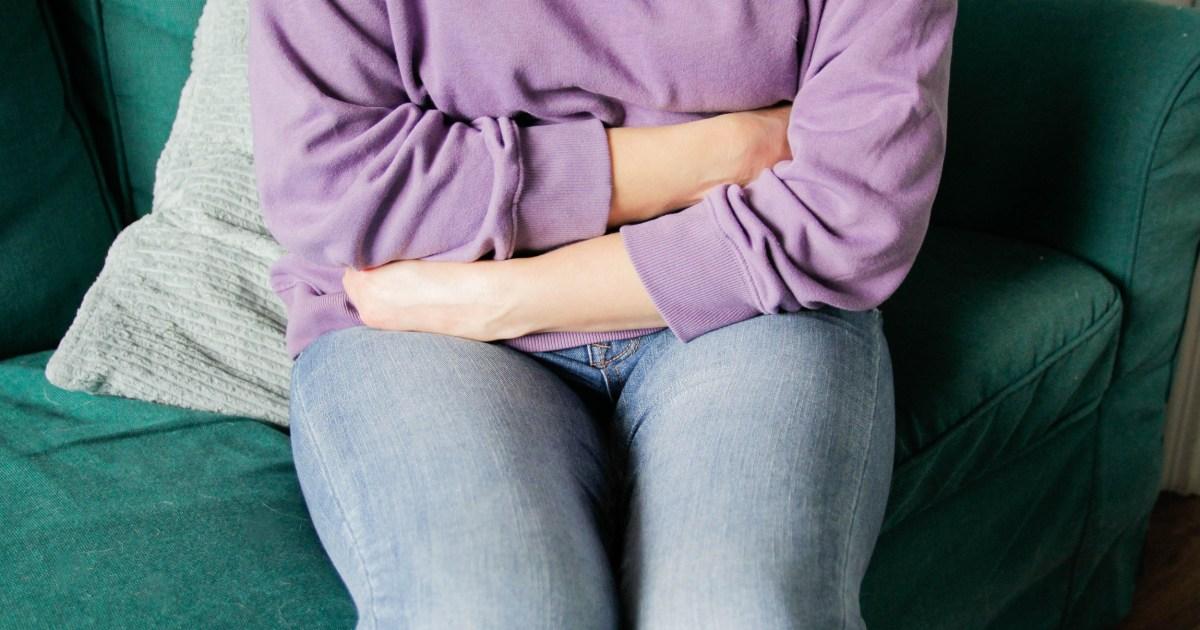The new strain of the notorious bug is on the rise (Picture: Getty Images)
The Kawasaki norovirus is a new strain of the vomiting bug sweeping the UK – and cruises, apparently.
Passengers on a P&O cruise hoping to enjoy a week-long European tour are ‘dropping like flies’ amid a suspected outbreak of the virus.
‘People [were] throwing up in restaurants, on decks, outside cabins,’ one passenger told Sky News.
P&O says about 1% of the 5,000 aboard the P&O Iona are reporting ‘gastrointestinal symptoms’.
This is a feeling that those sickened with norovirus know all too well, with the NHS reporting a ‘storm’ of new cases of the notorious bug.
What is norovirus?
Norovirus spreads easily (Picture: KATERYNA KON/SCIENCE PHOTO LIBRARY)
Norovirus is a viral infection that inflames your intestines, which is why many of the symptoms relate to tummy pain.
For many people, the illness is relatively mild and clears up after one to three days.
But norovirus can cause young children, older people and those with compromised immune systems or underlying conditions to become severely dehydrated.
In extremely rare cases, people sickened with norovirus require hospital treatment.
What are the symptoms of norovirus?
Nausea
Vomiting
Diarrhoea
High temperature
Headaches
Exhaustion
How does norovirus spread?
The virus is highly transmissible, which is partly why the virus does the rounds every winter.
After all, it only takes fewer than 100 norovirus particles to become sickened – and people ill with the virus spew billions.
Even after someone recovers, they can continue to shed the virus for up to two weeks.
The NHS says close contact with an infected person, touching surfaces where the virus is wriggling about and eating food prepared by someone with the virus are some of the main ways norovirus spreads.
Norovirus can also contaminate food and water.
In other words, picking up norovirus is a lot easier than you’d think. Health experts have long warned that the virus thrives on cruise ships, schools and care homes.
How do you treat norovirus?
Anyone infected with norovirus is urged to avoid contact with others for at least 48 hours after symptoms have subsided.
Staying at home is crucial in reducing the spread of the virus, which is linked to around 12,000 hospital admissions in the UK every year.
Anyone infected with norovirus is urged to avoid contact with others for at least 48 hours after symptoms have subsided (Picture: Getty Images/iStockphoto)
Dr Burke, a GP of some 25 years, said: ‘Try to keep your meals bland while you’re unwell with norovirus, to avoid further upsetting your stomach. If you are struggling to keep food down, try small amounts of easily digestible foods such as toast and crackers.
‘With any illness that causes sickness, it’s really important to maintain fluid levels while unwell to prevent dehydration. Our bodies lose a lot of fluids through vomiting and diarrhoea therefore, you must be regularly drinking clear fluids and electrolytes when you are unwell with norovirus.
‘When infected with norovirus, rest is essential for a quick recovery. It’s best to ensure that you are giving your body adequate time (a minimum of 48 hours) to rest and recover from the virus before returning back to work or school.’
How many people in the UK have norovirus?
Cases are on the up, according to public health officials, but this is to be expected during the winter.
The UK Health Security Agency reported 6,857 confirmed cases between January 6 to 19, more than double the seasonal average.
‘Norovirus activity has remained high this season and following a drop in reporting which coincided with the Christmas holiday period reporting is now rising again,’ the agency said in a report published Thursday.
The ‘Kawasaki’ strain of the virus was first detected a decade ago (Picture: Getty Images)
The NHS said hospitals in England have been hit by a ‘storm’ of norovirus cases, with tyhe number of beds taken up by patients with the virus at a ‘record high’.
‘An average 1,160 patients a day were in hospital with norovirus last week -a 22% surge on the previous week (948) and more than double the same period last year (509),’ the health service said.
Is the Kawasaki strain anything to be worried about?
Kind of. It’s nothing new; it was first detected in Kawasaki, Japan in 2014.
The UKHSA first reported a spike in this strain, known to scientists as GII.17, in April 2024. It is now behind almost seven in 10 cases of the bug.
Health officials say the increase in cases is happening because how we test for the virus is more refined than it was once.
Advances in epidemiology – the study of infectious diseases – and changes to national surveillance since the Covid pandemic are also why.
Get in touch with our news team by emailing us at webnews@metro.co.uk.
For more stories like this, check our news page.
Arrow
MORE: Drug used for millions of patients recalled due to ‘labelling error’ and overdose fears
Arrow
MORE: Supermarket recalls popular breakfast item over ‘foreign material’ fears
Arrow
MORE: Boy impaled on steak knife when he fell backwards onto open dishwasher
Checkout latest world news below links :
World News || Latest News || U.S. News
The post Six symptoms of ‘extremely contagious’ virus with people urged to ‘stay at home’ appeared first on WorldNewsEra.

